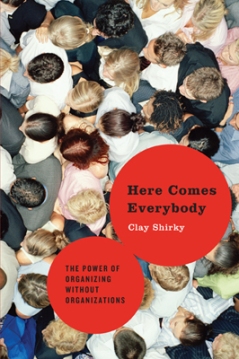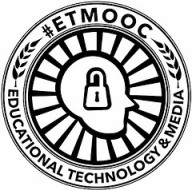This post includes takeaways from a ‘MOOC Jam’, a synchronous discussion online I participated in with a group of educators about digital pedagogy.
“What is a Jam? A Jam is an asynchronous, typed, online discussion designed to work around your schedule. The goal of a Jam is to gain perspective and solicit ideas that inform the community. After the Jam is over, you can read the exchange and the posted resources, which will remain available for several weeks.” MOOC Jam II, Digital Pedagogy (The three threads of asynchronous discussions in this jam are: 1) Competencies for teaching online, 2) Developing Faculty Competencies, and 3) Learner Analytics for Faculty)

Screen Shot of participants online during the Jam participating in the threaded discussions (only partial shot of participants)
This past Tuesday, I participated in a MOOC Pedagogy Jam via the website Momentum, a platform created for stakeholders to discuss critical issues related to education, sponsored by the Bill and Melinda Gates Foundation. The purpose of the platform is to provide a space to host online events about topics related to online education, with the ultimate goal of the Jams ‘to gain perspective and solicit ideas that inform the community’. I participated in the first MOOC Jam this past November. The topic, “Peer Review of a Framework for MOOCs” hosted by George Siemens, focused on the design of the MOOC Framework. Siemens, creator of the Framework, sought input from the community of participants.
The topic of this Jam, [which turned out to be more of a synchronous discussion] was digital pedagogy, divided into the three threaded discussions as mentioned above. Each discussion featured a moderator, responsible for responding to participants and furthering the discussion, and another moderator summarizing key themes of the discussion each hour. I chose to participate in ‘Competencies for teaching online: describing effective pedagogy’ given its description— “An exchange on how information is delivered to students, how they are engaged as active learners and community is built and how learning is assessed”.
Digital Pedagogy: Themes and Highlights
Following are my insights from the discussion on digital pedagogy and I’ve included comments from other participants. (Jam II, Momentum, Digital Pedagogy).
The discussion was rich with ideas, insights and provided a glimpse into the issues and challenges with online instruction. Though the title of the Jam featured ‘MOOCs’, much input from contributors pertained to closed, online courses which created an interesting discussion by highlighting one of the primary challenges in online education—the application of appropriate pedagogical methods, which will vary depending upon the learners, the delivery method and goals of the course.
Themes:
1) Part of the discussion was devoted to the contrast and challenges between learner-directed and instructor-directed learning. The fact that much discussion focused on this issue highlights one of the challenges with MOOCs; a MOOC, due to its scale and format lends itself to be learner-directed. It’s not surprising then that MOOCs attract learners that already know how to learn, are motivated and educated. Several Jam participants discussed methods to get learners involved in learning, how to encourage students to engage and participate [typically in the context of closed online classes].
“I’ve done something similar to engage students in action research with me. I was teaching Web Development and was not happy with the development framework we were using. So as a class we researched the pros and cons of various frameworks and decided as a class (with my approval) which one to use. This worked well – they had “buy in” as we used to say. Beyond that, I set basic specifications as to what they were to include in their work product, but allowed them to choose the subject matter (content). I also had to give approval before they began coding.”
I see the above challenge highlighting two opportunities: 1) to provide support to students to learn how to be self-directed, and 2) to provide skill development for educators and course designers in how to be flexible and adapt instructional strategies by assessing learners, the learning context and creating appropriate learning experiences, implementing pedagogical methods that match the learning needs.
One Jam participant shared an initiative that his institution recently started for its students; a program designed to address much of what was discussed here.
“California State University, Monterey Bay, is creating an online training module for training in baseline skills in web technologies for collaboration and other soft skills, such as team working relationships. Selecting appropriate pedagogy again depends upon an analysis of the learners — goes back to careful and thrustful planning”
2) Considerable discussion focused on how to get students to interact, collaborate and engage with peers in online classes, and what the instructors role is in facilitating group formation, participation and learner engagement. Though this theme is similar to the theme mentioned above, interesting thoughts on group formation and collaboration emerged—should it be encouraged, facilitated or left for students to form spontaneously? And if so, how? This relates to the motivation of the learner, which is quite different when students are in for-credit classes versus ‘free’ and open classes [MOOCs] that are driven by interest and desire to learn—essentially self-directed.
“But a key trade-off when you have non-static groups, as Michaelsen, Fink et al have looked at is that you lose the crucial accountability factor and or the time to form constructive group norms/roles etc. — this then leads to the ‘freeloaders’ issue that gives groupwork such a bad rep. There is the challenge — in a MOOC context, can you establish stable, productive learning groups with accountability, positive norms, roles etc to really activate the engagement, peer learning and other benefits of group learning?”
The comment above is interesting—is it really possible or desirable in a MOOC environment that the responsibility for group accountability and productivity rests with the instructor?
3) The session wrapped up with discussion that focused on supporting learners, helping learners to learn in a MOOC format. The question appears to be—how can this be accomplished, is it through course design, or while the course is live, accomplished via course facilitators? Or do we need to teach students how to learn in a MOOC?
“I think one of the goals for a MOOC is enabling learners to make connections, share, collaborate and learn from one another. Rather than thinking about self-directed or facilitator directed maybe we need to think about how we can create ways that encourage learners to support one another?”
“I am very interested in how learners can and do support one another’s learning in MOOCs. Do you have some thoughts in mind about the answer to this question? What can we build into the design that supports and encourages peer-peer learning?”
Closing Thoughts
Discussions, similar to those within this Jam, create excellent opportunities to get the issues and challenges facing education, specifically online education, out in the open. It also helps stakeholders identify what needs to be discussed and explored within their own institutions. There are commonalities across all institutions when it comes to online education, and ironically the very barriers affecting these issues, exist within institutions at all levels. Fortunately there is progress—many institutions are experimenting, collaborating and striving to adapt to cultural shifts, increase access, yet still provide high quality, relevant education. Are there similar discussions happening within your institution?
- MOOC Pedagogy Jam, Momentum








 Students that are enthusiastic about online learning cite numerous reasons for preferring the virtual format, yet it’s flexibility that is extolled most often – the ability to study and learn on ‘my time’. Ironically, it is this convenience factor that can cause some online students to procrastinate, or worse fail to engage in the learning process at all, which often leads to students dropping out or performing poorly.
Students that are enthusiastic about online learning cite numerous reasons for preferring the virtual format, yet it’s flexibility that is extolled most often – the ability to study and learn on ‘my time’. Ironically, it is this convenience factor that can cause some online students to procrastinate, or worse fail to engage in the learning process at all, which often leads to students dropping out or performing poorly.



